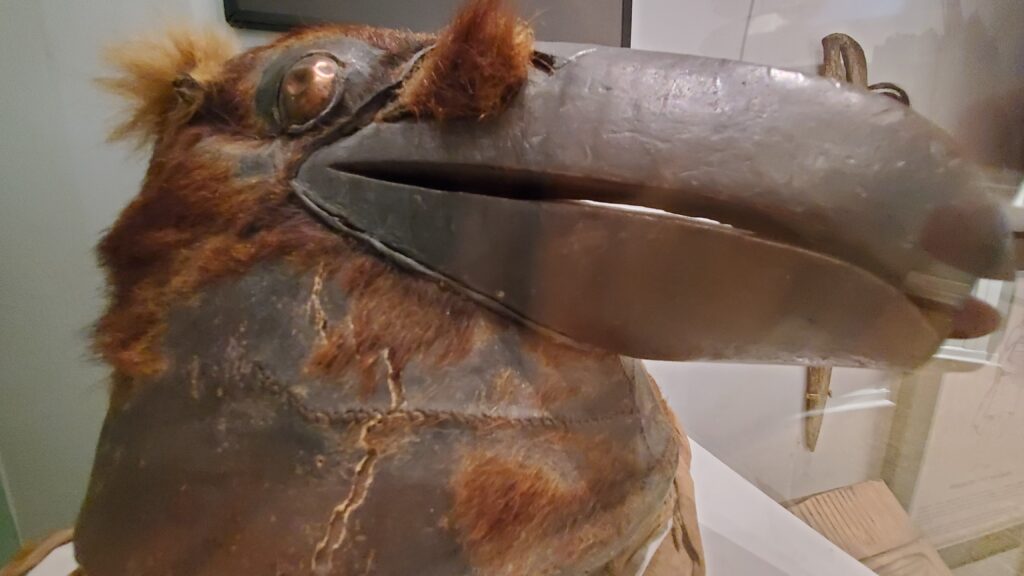Sitka, Alaska – The relationship between the Russians and the Tlingit was complex (which is probably true of all indigenous populations and colonizers). In 1802, the Tlingit drove the Russians away from their original settlement at Old Sitka. But a Tlingit shaman predicted that the trouble was not over. Indeed, the Russians returned two years later, launching an attack on the Tlingit fortified village at Shis’g’i Noow. The site of the 1804 Battle of Sitka is now the Sitka National Historic Park.

This commemorative totem–known as Katlian’s pole–stands on the site of the 1804 Battle of Sitka.
We had the great honor to meet the master carver Tommy Joseph who carved this totem (and many others at the park) and talk to him about his work.
The frog figure at the bottom represents the Kiksadi clan, which united the other Tlingit clans to resist the Russian encroachment. The frog is holding the raven helmet, which supposedly was worn by Tlingit warrior Katlian when he led the natives against the Russians.
This fascinating history is the subject of our forthcoming book, Last Stand of the Raven Clan.

Later, we saw this precious artifact–the actual raven helmet–which is on display at the Sheldon Jackson Museum. Very cool!


